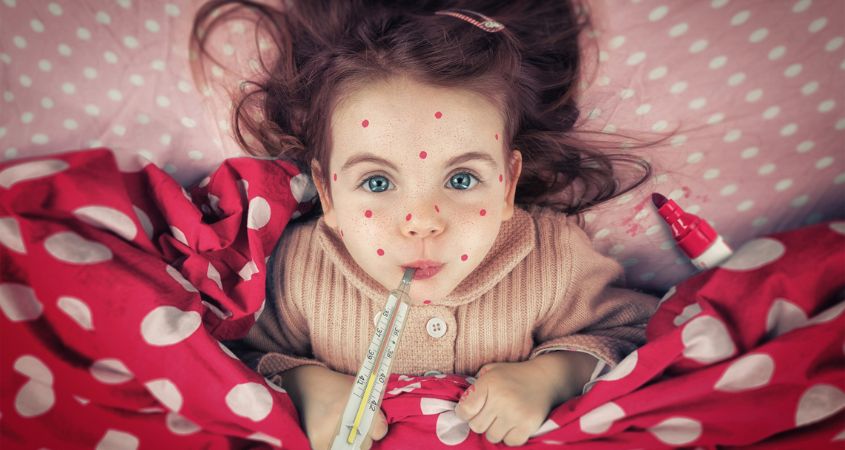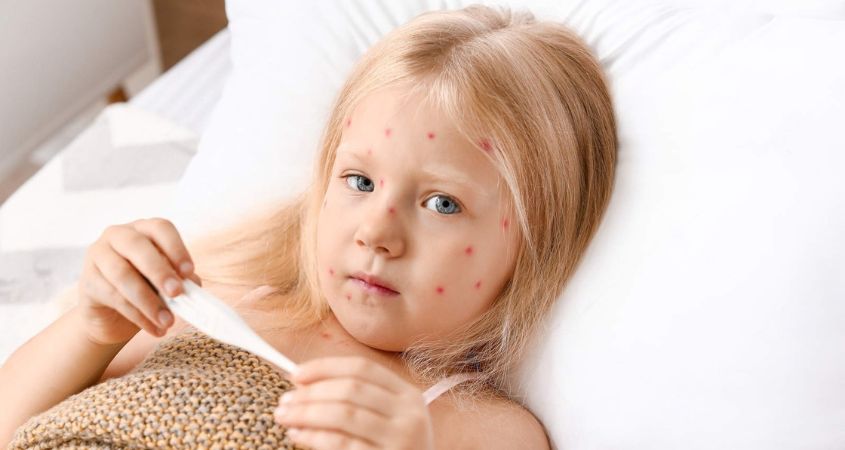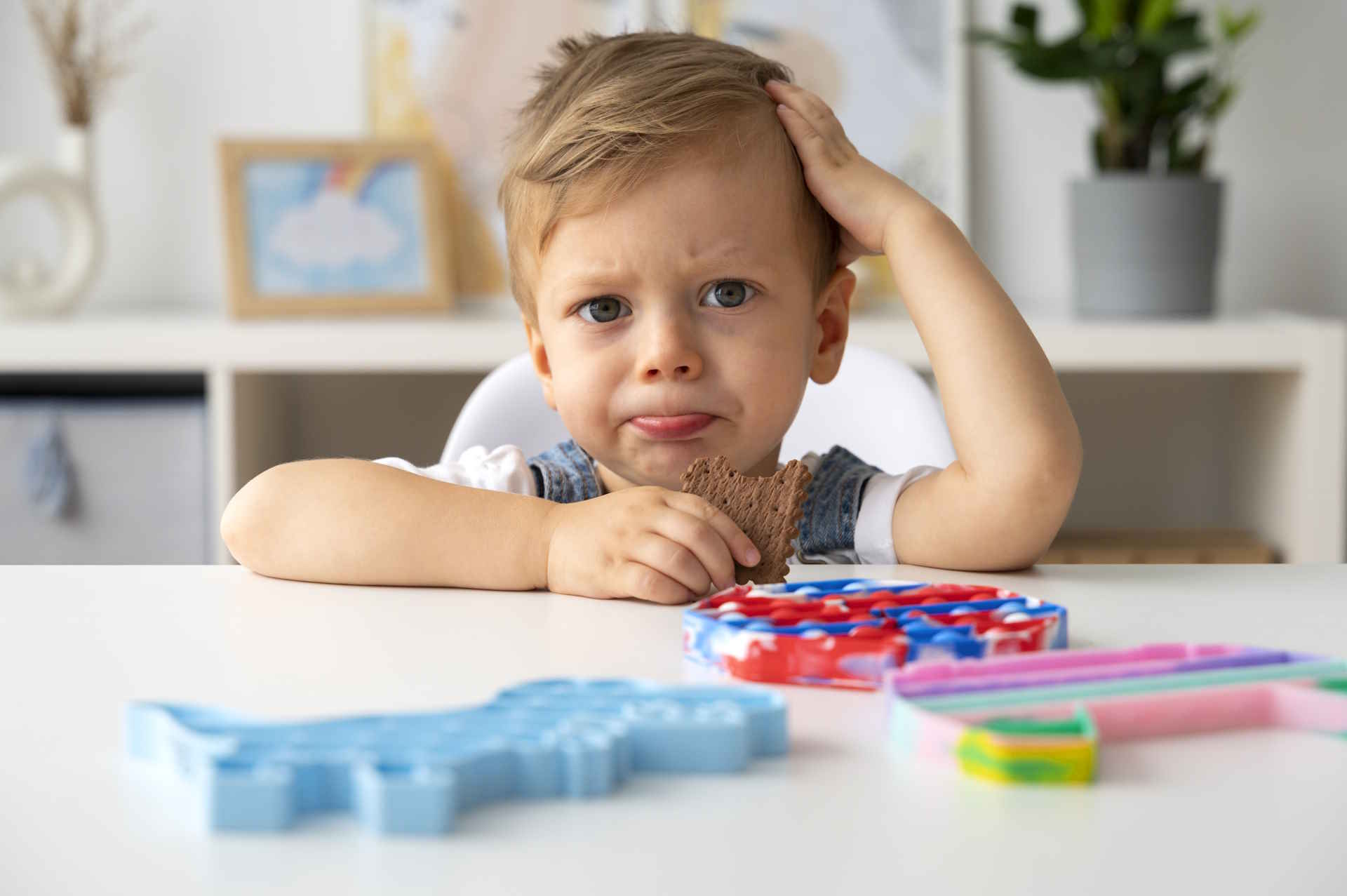What is chickenpox?
Chickenpox is a contagious viral disease that usually affects children. It causes symptoms such as fever, fatigue, headache and loss of appetite, followed by a characteristic rash. The infection is transmitted through air droplets or direct contact with the rash blisters
Most cases in children go away without complications, but in adults or people with weakened immune systems, it can cause serious complications. Treatment is aimed at relieving symptoms and preventing infection, including taking antiviral medicines and practising good hygiene. It is recommended to consult a doctor for treatment and to prevent the spread of infection.
During the first six years, children are often exposed to a variety of illnesses, including chicken pox.
My personal experience of how I came across chickenpox
This article is the personal experience of Xenia, the owner of the agency, treating chicken pox, and not a medical article.
During the quarantine both my sons fell ill. My younger son first developed a fever during the day and itching and rash at night. After 11 days, the condition of the older child and me worsened at the same time. I went to the paediatrician after the first symptoms to get a diagnosis and treatment.
Contact the Dream Nanny Agency.
How chicken pox was treated in children
Remember that the list of medications is prescribed by the doctor and the medications below are only a specific example in a particular case.
To relieve itching, the following medicines were used:
- “Calaminoc” tonic and “Powder Plinth” which help to dry and cool the skin, relieving itching and giving relief;
- We took an antihistamine – drops “Edermik” for 5 days, but we did not see any significant effect;
When the temperature dropped, 2 days after the rashes appeared, we started taking warm showers once a day to relieve the itching. The duration was no more than 5 minutes and no sponge or soap was used.
The following treatments were used for oral inflammation:
Stomatidine (a topical antiseptic) was used as a mouthwash. It helps to relieve pain and kill bacteria;
With fever, especially at night, we noticed an increase in the volume of the vesicles, their filling with fluid and reddening of the skin (hyperaemia) in the area of the rash. Betadine, an antiseptic that, unlike iodine, was easily washed off, was used to alleviate these symptoms.
During chickenpox, the temperature in children may remain high for 3-5 days and fluctuate slightly. It is recommended to take antipyretic medicines when the temperature is higher than 38 degrees Celsius to relieve the child’s condition. Before you start taking medication, be sure to get advice from your doctor.
Nurofen is a very popular remedy for reducing fever. However, before using the medicine, be sure to study the instructions. Observe this rule in any prescription of medication, because during chickenpox, it is recommended to avoid taking Nurofen and Ibuprofen to prevent possible aggravation of the rash and complications.
Few people know about it, and the doctor may not tell you. Of course, the instructions may have information in small print that few people pay attention to.
Usually the blisters on the skin dry up after 3-4 days, form crusts and disappear without scarring within 2-3 weeks. It should be noted that after the disease, the body develops lifelong immunity.
We strongly recommend that you do not self-medicate and consult a doctor.

Useful tips for treating chickenpox in children from personal experience:
- Avoid using Ibuprofen to reduce fever! Panadol, Paracetamol, or Efferalgan are recommended instead.
- From the beginning of the disease, start taking acyclovir (in tablets).
- After a week, the rash gradually decreases in size, becomes paler, the blisters burst and crusts form in their place.
- Do not use moisturiser during the illness to avoid spreading the infection.
- Powder plin containing zinc and tonic with calamine help fight rashes and speed up the healing process.
- For itchy skin, showering is recommended 2-3 days after the onset of the condition.
- Until all the crusts on your body have fallen off, do not take a bath to avoid the risk of new sores. The largest blisters usually heal within 7-10 days.
- When treating the scalp, use a thin brush to apply the tonic to the rash. The brush should be pre-treated with chlorhexidine before use.
- It is necessary to repair the damaged skin after the crusts have fallen off. To prevent the appearance of pigment spots, use panthenol cream and be sure to protect the skin with baby sunscreen. The paediatrician recommended Weleda Edelweiss cream for sensitive skin with SPF 50 or 30.

Usually, symptoms of chickenpox appear in a person 10-21 days after possible contact with the infection. This period is called the incubation period. Children over 3 years of age carry the disease more severely than babies.
In adults, chickenpox poses a significant risk, especially because of possible complications such as damage to internal organs or the development of pneumonia. Pregnant women are also at serious risk from chickenpox, as the disease can adversely affect the development of the foetus and lead to serious problems before delivery.
Because of these potential dangers, adults who encounter chickenpox should always seek medical attention and treatment under the careful supervision of a specialist. Only those medications recommended by the doctor should be used during treatment. This approach ensures optimal management of the disease and reduces the risk of possible complications.
Usually the first signs of the disease appear after the incubation period. These symptoms include an increase in body temperature, general weakness and the appearance of a characteristic rash. Gradually, vesicles with rash appear on the skin and mucous membranes, then crust over and disappear within 7-10 days.
The disease is highly contagious, and the person remains infectious until all skin lesions have completely overgrown. In most cases, the disease is relatively mild, but you should be aware of possible serious complications.
These complications include bacterial infections such as inflammation of the subcutaneous tissue or pneumonia, which can be life-threatening in certain situations. Neurological complications, such as encephalitis, are also possible, which can have severe and even fatal consequences.
Be healthy, take care of yourself and your children! We hope that this article will help those who encounter chickenpox.


Latest posts
-

Kindergarten or a nanny?
What are the benefits to ensure the comfort and safety of the child
-

Does the nanny have to love the child?
The Role of a Nanny in a Family for the Formation of Attachment
-

Innovative teaching methods
How to get a professional education as a nanny-governess
-

How to successfully select a nanny and create a harmonious relationship with her
Practical tips on how to find and successfully work with a nanny







